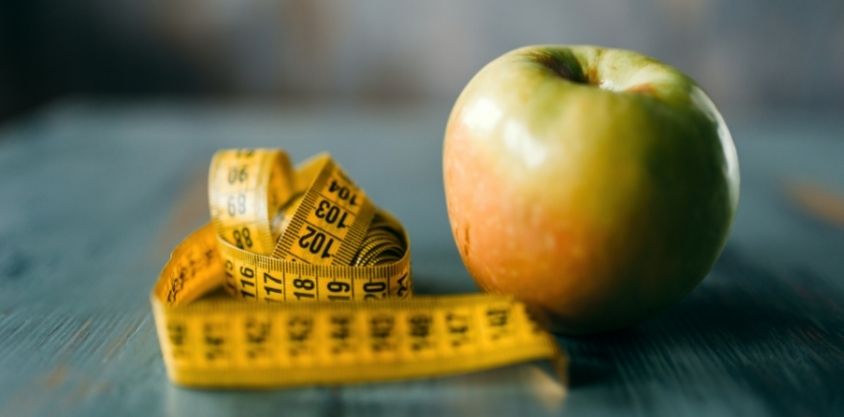
Moderate eating allows you to eat a wide variety of foods. This diet allows you to eat dairy or milk substitutes, nuts and seed, healthy fats and poultry in moderation. Although this type of diet is mostly vegetarian or vegan, it's possible to eat a variety.
Metabolic typing
Metabolic typing is a pseudoscience that claims that each person has a unique metabolism and needs a different proportion of different macromolecules in their diet. One person may find a certain number of macromolecules beneficial for their health. However, another person might find it harmful.
A metabolic typing diet chart can help determine the right macronutrient ratios for your body. Certain people may be more successful eating high levels of protein, while others will benefit from eating a diet that emphasizes carbohydrates. The ratio of different macronutrients has a large impact on health and weight. For this reason, metabolic typing should be used only by healthy individuals. Ask a physician if you have any questions about your metabolic profile.
Plant-based diets
A plant-based diet has many benefits for the body, including the prevention of several diseases. This type of diet is completely free from processed foods and added sugars. This diet is high-fiber and low in saturated and cholesterol. It can also help to reduce body weight and LDL cholesterol, two of the main causes of cardiovascular disease.

A plant-based food plan includes a variety vegetables and fruits. It should include at least 2/3 of all plant-based food. It must also be free from meat and animal products. It should also have healthy fats such olive oil and nuts, seeds, and avocados. You should include whole grains as well as beans in your diet.
Low-carb diets
Low-carb diets reduce the amount carbohydrates in a person’s diet relative to an average diet. These foods are replaced with foods rich in protein and fat. This makes them more filling, satiating, and satisfying. For those trying to lose weight, a low carb diet is a great option.
Talk to your doctor before you start a low-carb lifestyle. It is important to assess whether a low-carb diet will benefit you and to take into account your dietary requirements before making drastic changes. Carbohydrates should account for 45 to 65 per cent of a person's daily calories. A low-carbohydrate diet, however, restricts them to no more than 26 percent. That means that one should not consume more then 130 grams of carbs per day.
Ketogenic diet
A Ketogenic is a diet that uses your body's fat to provide energy. This is achieved by reducing insulin levels, which turns the body into a fat-burning machine. MCT Oil is often added to the ketogenic diet. It increases the body's production of ketones as well as fat-burning hormones.
When following the ketogenic diet, it is important to drink a gallon of water every day. Water regulates many bodily functions including hunger. In order to lose weight, a steady supply of water can help reduce insulin spikes. Regular exercise is essential in addition to drinking plenty of fluids. Walking for 20 minutes daily can help you lose fat and maintain your blood sugar levels.

Atkins diet
Although the Atkins Diet can be challenging, it offers many benefits. The Atkins diet promotes healthy lifestyle changes that can last up to one year. This diet is very popular with people looking to lose weight long-term. It offers low-carb options such as spaghetti squash and chicken meatballs. The diet also includes low-calorie versions of some popular foods, such as cucumber slices topped with cream cheese and celery sticks with peanut butter.
The Atkins diet is growing in popularity but it is also being criticized. Some doctors believe the diet can be harmful to people, especially those with serious health problems. According to American Medical Association, the Atkins Diet differs from those recommended by the American Dietetic Association and American Medical Association. Atkins diet lacks essential nutrients, vitamins, and is high in fat.
FAQ
How do I lose weight
Losing weight is one of the most popular goals among people who want to look good. People desire to lose weight because they want to live longer, feel healthier, and live longer. There are many different ways to lose weight. There are many options for losing weight, including cardio training and strength training. Each type of exercise has its own benefits and drawbacks. Walking, for example, is the best way of burning calories. To build muscle mass, you should consider lifting weights. We'll be discussing how to lose weight, and which exercise is best.
What kind of diet plan should you follow when trying to lose weight? You don't have to eat as much, but you do need to reduce the amount of processed foods and avoid junk. Aim to consume no less than 2200 calories each day. If you want to lose weight faster, you should reduce your calorie intake even further. This way, you will get rid of fat much faster.
Get active if you want fast weight loss. Exercise helps to reduce calories and improve metabolism. A healthy diet and exercise are key to losing weight. You lose energy when you exercise and you won't eat as much. If you work out regularly, you will notice that your body starts burning fat faster than before. Regular exercise can help you live a healthy life. They keep you fit and prevent diseases such as diabetes, heart disease, obesity, hypertension, etc.
It is important to get as much exercise as you can. Walking can burn around 500 calories an hour. A walk of 30 minutes per day can help you to burn approximately 1500 calories. Thus, each week you'll lose 1 pound of body fat. You can also run for 10 minutes or jog. Running burns around 1000 calories per hour. For a goal of losing 5 pounds in 3 week's time, you should run for 20 mins three times a week.
Combining exercise with healthy eating habits is the best way lose weight. Try to find a balance between these two factors.
How much weight can you lose in one week?
Your current bodyfat percentage determines the amount of weight you will be able to lose. The first thing to do is to calculate how much weight you want to lose and then find out what your BMI (Body Mass Index) is. Your BMI indicates how much weight we should lose to achieve our goal. If your BMI is 25 or greater, you're overweight. If your BMI exceeds 30, you may be obese.
For example, let's say you have a BMI of 28.7 and are 200 pounds. This means that you'd need to lose around 70 pounds to get down to a healthy weight range. To see if you're overweight, visit www.healthyminds.com/bmi/.
This formula can be used to calculate how many pounds you will lose each week once you have determined your BMI.
(Your Goal Weight - Current Weight)/BMI * 7 Number Of Pounds Lost Per Week
To lose 50 pounds in a month, you would need to exercise for 2 weeks. That's 56 days divided by 7 pounds per day. That works out to 8.3 pounds lost per week.
You could also try this calculator from www.weightlosscalculator.net. It gives you a rough estimate of how many calories you should eat daily to lose 1 pound per week.
How long does weight loss take?
It takes time to lose weight. It takes about six months to lose 10% of your weight.
You shouldn't expect weight loss overnight. Your body needs to adjust to new dietary habits.
This means you need to gradually alter your diet over several weeks or days.
Fad diets don't work and you should get off them. Instead, you should change your daily routine.
You should stop eating unhealthy snacks late at nights, for example.
Eat healthier meals earlier in evening. This will help you avoid snacking at night.
You should also drink plenty of water during the day. Water is essential for keeping your body hydrated. Dehydration causes you to feel fatigued and slow.
Drinking lots of water throughout the day can help you stay energized, focused, and alert.
Doing things that are relaxing can help you reduce stress. You can spend time with family members, for example.
You could also read books, watch movies or listen to music.
These activities will help you unwind from stressful situations. In addition, they will improve your mood and boost your self-esteem.
So, when you're trying to lose weight, you should always think about your health first.
Your overall health is directly related to your physical fitness. You should eat right and exercise regularly if you want a fit body.
Statistics
- A 12-week study in 20 women with obesity found that walking for 50–70 minutes 3 times per week reduced body fat and waist circumference by an average of 1.5% and 1.1 inches (2.8 cm), respectively (healthline.com)
- According to Harvard Health, it's estimated that a 155-pound (70-kg) person burns around 167 calories per 30 minutes of walking at a moderate pace of 4 mph (6.4 km/h) (5). (healthline.com)
- According to a study sponsored by the American Council on Exercise, a person weighing around 140 pounds (64 kg) would burn 108 calories at a 30-minute beginner's Pilates class or 168 calories at an advanced class of the same duration (26). (healthline.com)
- Among women, the increase in metabolic rate was nearly 4%, or 50 more calories per day (14Trusted Source (healthline.com)
External Links
How To
How to Intermittent Fasting
Intermittent Fasting is a method of dieting where you only eat one meal per week, typically Monday through Friday. This is a way to cut down on calories while still getting enough nutrition. It's believed that this helps burn fat faster than if you were eating normal meals throughout the entire week.
The most common form of IF involves restricting calories only on certain days of the week. This would be a way to skip breakfast and eat whatever you want throughout the day. It is possible to choose to have three smaller meals each day, rather than two large.
Many forms of intermittent fasting are available, such as alternate day fasting (5/2 fasts), 8/4 fasts and 16/8 fasts. There are pros and con's to every type of intermittent fasting. Alternate Day Fasting is the easiest to begin because you don’t have to make significant changes in your life. However, for some people it can be difficult to follow a strict diet, so they may prefer to explore other options.
Alternate-day fasting is a good option if you are looking to begin an intermittent fasting program. This will allow you to gradually transition into more extreme fasting routines without completely changing your lifestyle.